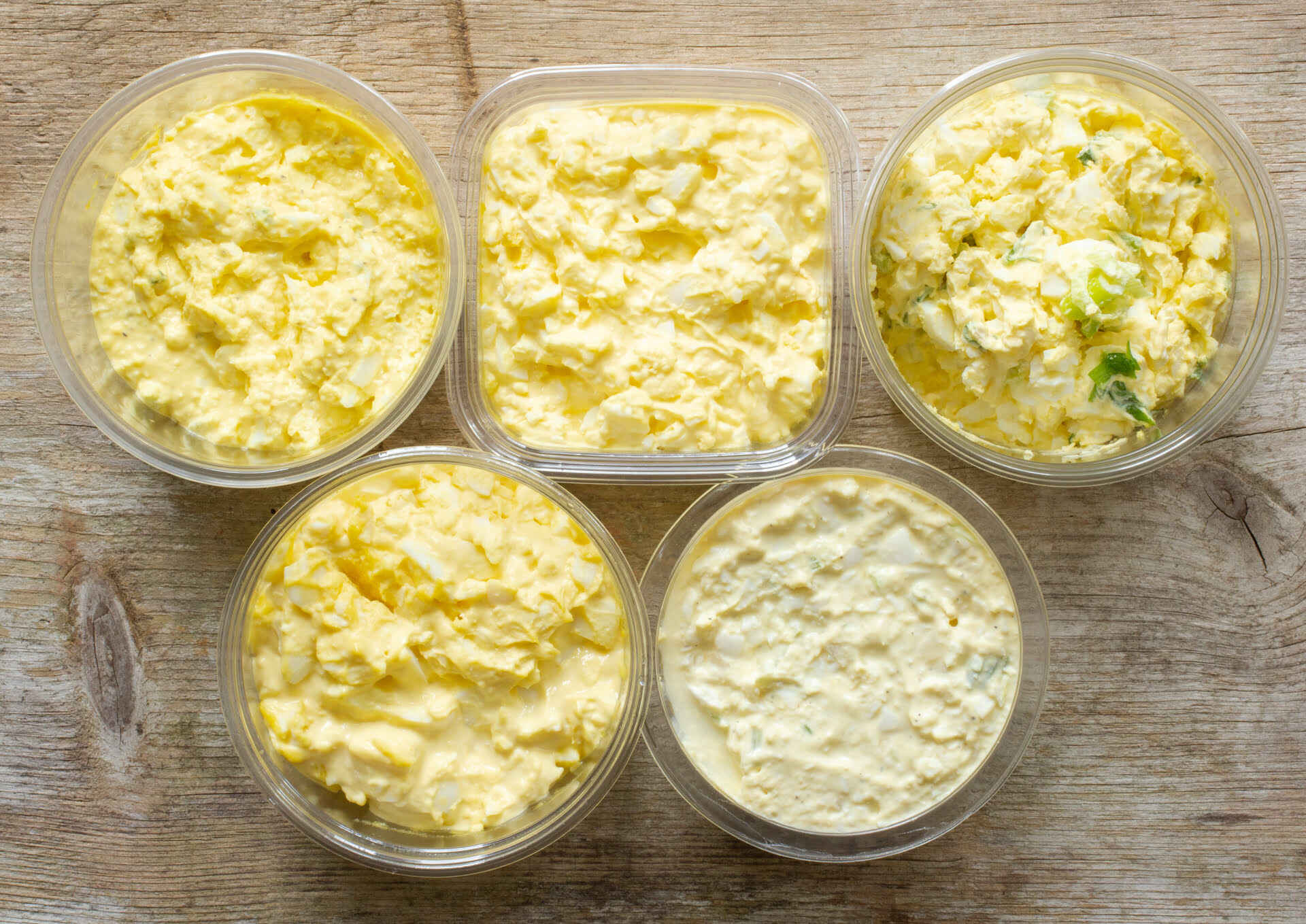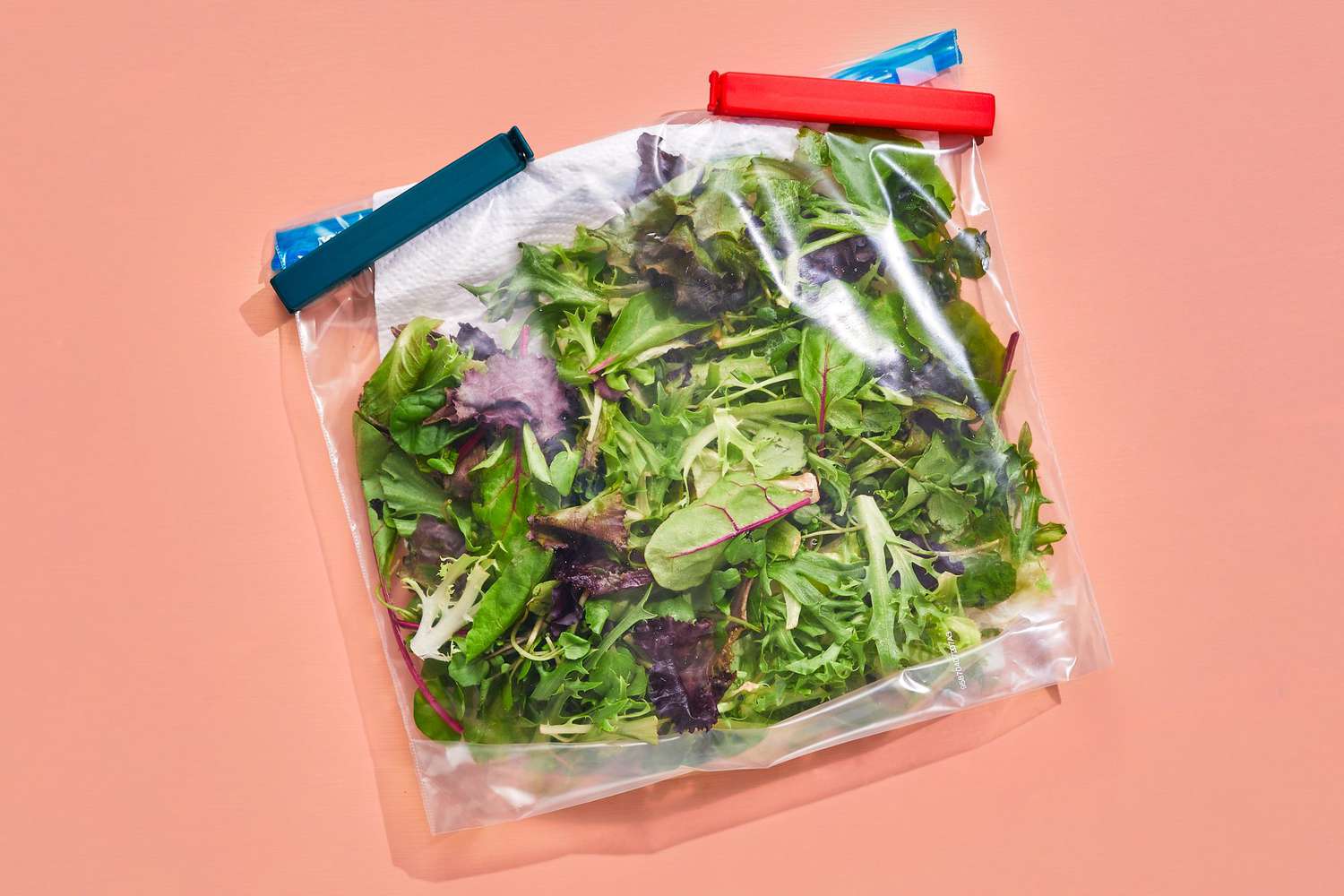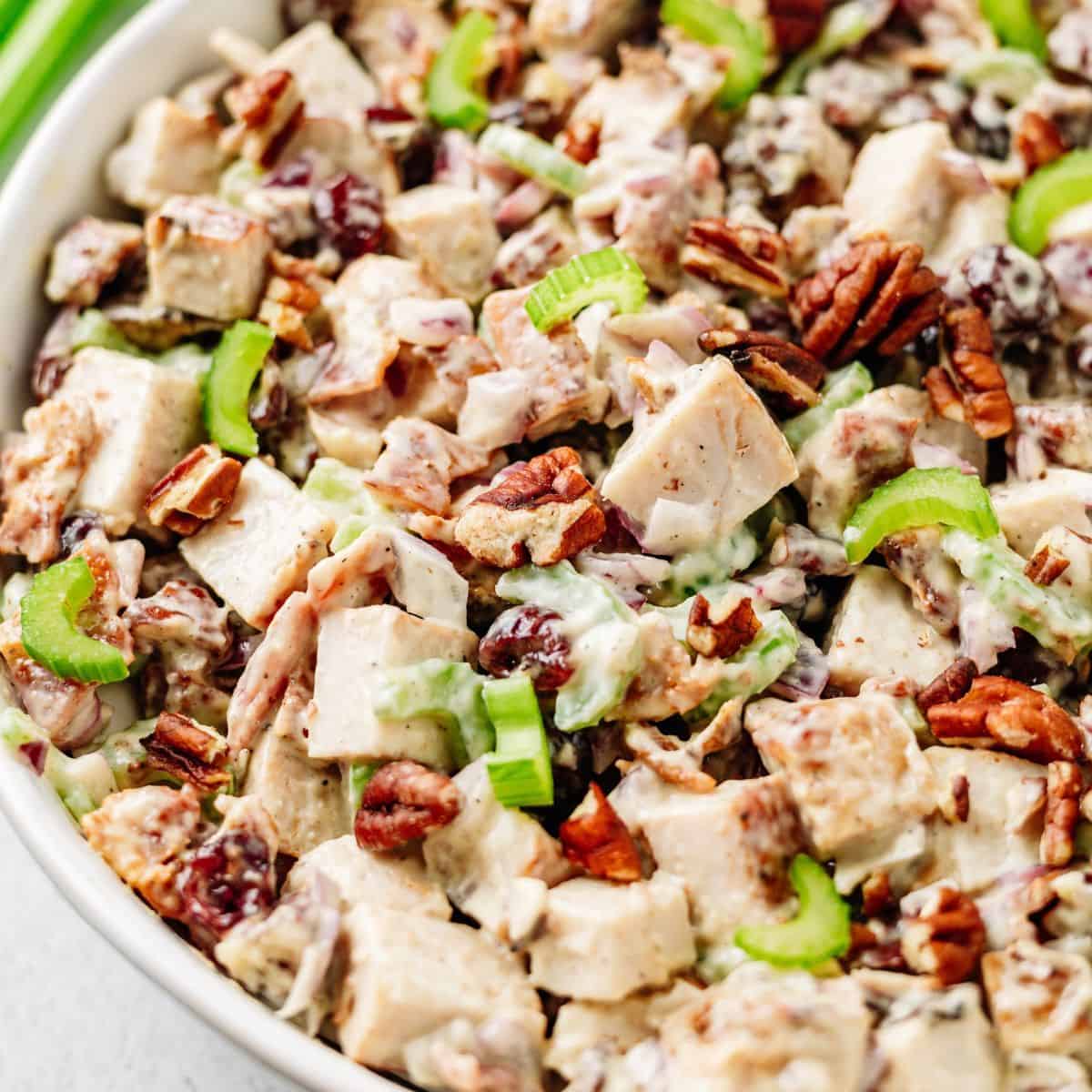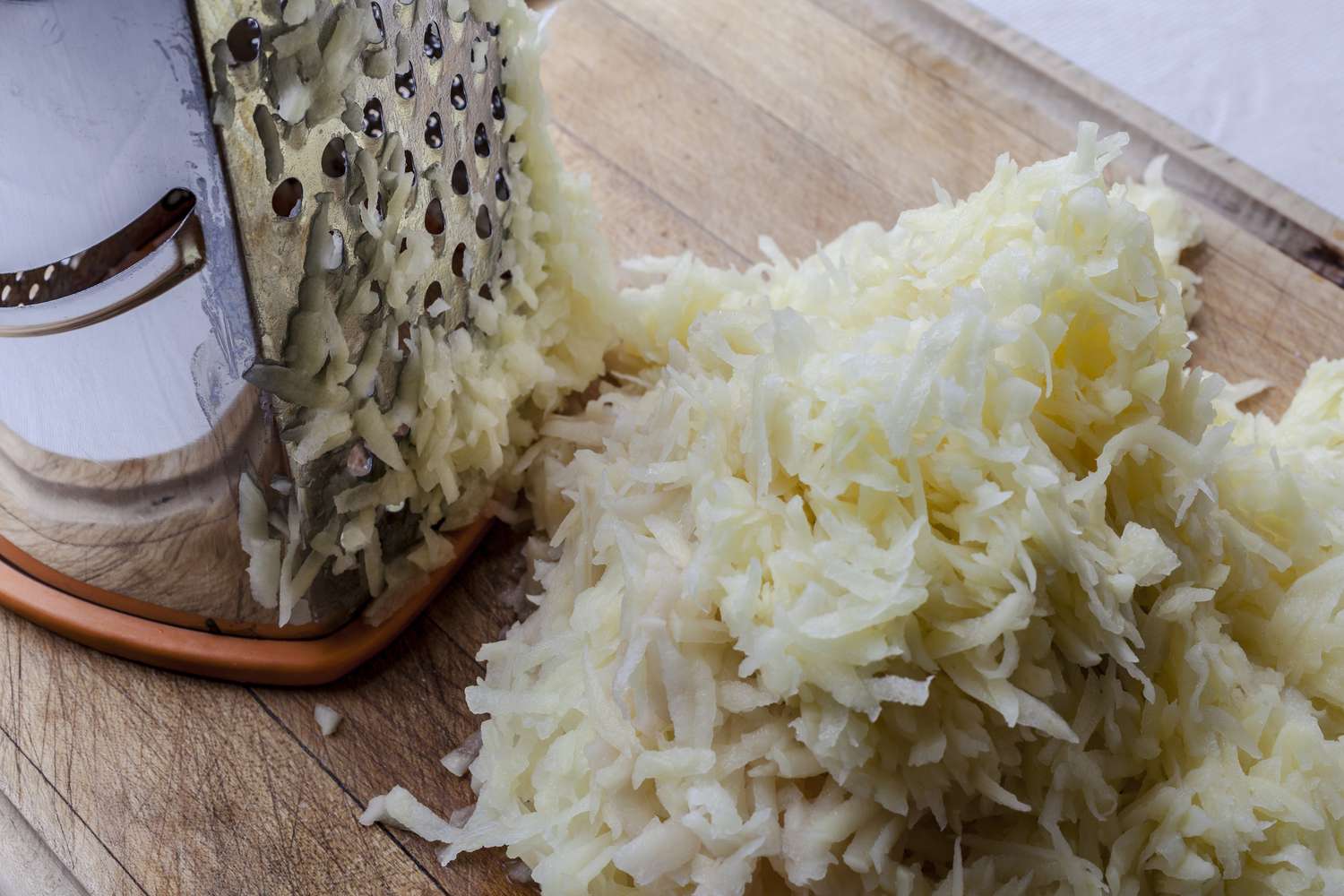Home>Articles>Which Temperature Is Acceptable For Cold Storing Potato Salad


Articles
Which Temperature Is Acceptable For Cold Storing Potato Salad
Modified: September 2, 2024
Discover the ideal temperature for storing potato salad in your kitchen. Ensure freshness and taste with proper cold storage. Find out more!
(Many of the links in this article redirect to a specific reviewed product. Your purchase of these products through affiliate links helps to generate commission for Storables.com, at no extra cost. Learn more)
Introduction
Potato salad is a classic dish that is enjoyed by many, especially during the summer months. Whether you’re hosting a backyard barbecue or attending a potluck, a bowl of refreshing and creamy potato salad is always a crowd-pleaser. However, to ensure the quality and safety of potato salad, it’s important to store it at the right temperature.
Cold storage is essential for potato salad, as it helps to keep the ingredients fresh, prevent bacterial growth, and maintain the desired texture and flavor. In this article, we will explore the factors affecting the temperature for storing potato salad and provide recommendations for the ideal temperature range to ensure its quality and safety.
By understanding the importance of proper temperature control and following the guidelines, you can keep your potato salad delicious and safe to consume for longer periods.
Key Takeaways:
- Keep potato salad fresh and safe by storing it between 34°F (1°C) and 40°F (4°C) to inhibit bacterial growth and maintain texture, flavors, and consumer satisfaction.
- Chill ingredients, use airtight containers, and monitor refrigerator temperature to ensure potato salad remains delicious, safe, and enjoyable.
Factors Affecting the Temperature for Storing Potato Salad
Several factors need to be considered when determining the optimal temperature for storing potato salad. These factors include:
- The ingredients used: Potato salads typically contain perishable ingredients such as mayonnaise, eggs, and fresh herbs. These ingredients require refrigeration to prevent spoilage and bacterial growth. It is important to note that mayonnaise-based potato salads should never be left at room temperature for an extended period as it can lead to foodborne illnesses.
- Microbial growth: Bacteria thrive at temperatures between 40°F (4°C) and 140°F (60°C), also known as the “danger zone.” Storing potato salad at temperatures below 40°F (4°C) inhibits the growth of harmful bacteria, reducing the risk of foodborne illnesses.
- Texture and quality: Cold temperatures help to maintain the desired texture and consistency of potato salad. When exposed to warm temperatures, the ingredients in potato salad can become mushy and lose their freshness. Storing potato salad in cold temperatures helps to preserve its crunchiness and overall quality.
- Food safety regulations: Food safety regulations recommend storing perishable foods, including potato salad, at temperatures below 40°F (4°C) to prevent bacterial growth and ensure consumer safety. Following these guidelines is essential to maintain food quality and avoid potential health risks.
Considering these factors, it is evident that storing potato salad at the right temperature is crucial to preserve its quality, prevent foodborne illnesses, and maintain consumer satisfaction. The next section will provide recommended temperature ranges for cold storing potato salad.
Recommended Temperature Range for Cold Storing Potato Salad
The ideal temperature range for cold storing potato salad is between 34°F (1°C) and 40°F (4°C). At this temperature range, the growth of bacteria and other harmful microorganisms is significantly slowed down, ensuring the safety and freshness of the salad.
It is essential to keep the potato salad consistently cold within this recommended temperature range to maintain its quality. Fluctuations in temperature can lead to food spoilage and increase the risk of foodborne illnesses. Therefore, it is advisable to store potato salad in a refrigerator or a dedicated cold storage unit.
When storing potato salad in a refrigerator, it is crucial to set the temperature to the right level and monitor it regularly. The refrigerator should be kept at a temperature of 40°F (4°C) or below, with the salad placed on a shelf in the middle or upper part of the refrigerator to ensure even cooling.
Furthermore, it is vital to avoid overpacking the refrigerator, as overcrowding can hinder proper air circulation and lead to uneven cooling. This can compromise the quality and safety of the potato salad.
When transporting potato salad to a potluck or outdoor event, it is essential to use coolers or insulated bags with ice packs or frozen gel packs to maintain the desired temperature. The salad should be kept cold until it is ready to be served.
Overall, maintaining the recommended temperature range of 34°F (1°C) to 40°F (4°C) is crucial to ensuring the safety and quality of potato salad. Following these guidelines will help keep the salad fresh, delicious, and safe for consumption.
The acceptable temperature for cold storing potato salad is 40°F (4°C) or below. It is important to keep the salad refrigerated to prevent bacterial growth and foodborne illness.
Impact of Temperature on the Quality and Safety of Potato Salad
The temperature at which potato salad is stored has a significant impact on its quality and safety. Here are the key factors affected by temperature:
1. Bacterial growth: Potato salad, especially those containing mayonnaise, is susceptible to bacterial growth. Bacteria multiply rapidly in the “danger zone” temperature range of 40°F (4°C) to 140°F (60°C). Storing potato salad at temperatures below 40°F (4°C) helps inhibit bacterial growth and reduces the risk of foodborne illnesses.
2. Texture and consistency: Cold temperatures help to maintain the desired texture and consistency of potato salad. When exposed to warm temperatures, the mayonnaise can break or separate, resulting in a watery and unappetizing salad. Storing potato salad at the recommended temperature range of 34°F (1°C) to 40°F (4°C) helps the ingredients retain their texture and ensures a creamy and enjoyable salad.
3. Preservation of flavors: Cold temperatures help to preserve the flavors of the ingredients in potato salad. When stored at the right temperature, the flavors of the potatoes, vegetables, and seasonings stay intact, enhancing the overall taste of the salad.
4. Freshness and shelf life: By storing potato salad in cold temperatures, you can extend its shelf life and maintain its freshness. Cold storage slows down the natural degradation process, helping the salad stay fresh for longer periods.
5. Food safety: Proper temperature control is crucial for food safety. Storing potato salad at the recommended temperature range helps prevent the growth of harmful bacteria, reducing the risk of foodborne illnesses. It is essential to adhere to food safety guidelines to ensure the safety of consumers.
6. Consumer satisfaction: Storing potato salad at the right temperature not only ensures its safety but also enhances consumer satisfaction. A properly chilled salad with optimal texture, flavors, and freshness is more enjoyable and appealing to eat.
Overall, maintaining the correct temperature for storing potato salad is essential for preserving its quality, safety, and consumer satisfaction. By following the recommended temperature range and handling guidelines, you can enjoy delicious and safe potato salad every time.
Tips for Properly Storing Potato Salad in Cold Temperatures
To ensure the freshness, quality, and safety of potato salad, it is important to follow these tips for proper storage in cold temperatures:
- Chill the ingredients: Before preparing the potato salad, ensure that all the ingredients, especially the cooked potatoes, are fully chilled. This helps maintain the desired temperature and prevents the salad from reaching the danger zone.
- Use airtight containers: Store potato salad in airtight containers to prevent air exposure and maintain the desired temperature. This helps to prevent the salad from drying out and keeps unwanted odors from permeating the salad.
- Refrigerate promptly: Immediately after preparing the potato salad, refrigerate it within two hours. The sooner the salad is refrigerated, the better it will retain its freshness and prevent bacterial growth.
- Store on a dedicated shelf: Place the potato salad on a dedicated shelf in the refrigerator, away from raw meat, seafood, and other potentially contaminating foods. This prevents cross-contamination and preserves the salad’s integrity.
- Monitor refrigerator temperature: Regularly check and monitor the temperature of your refrigerator using a thermometer. Ensure that it remains consistently between 34°F (1°C) and 40°F (4°C) to maintain the optimal temperature for storing potato salad.
- Avoid overpacking the refrigerator: Do not overcrowd the refrigerator, as it hinders air circulation and may result in uneven cooling. Allow sufficient space around the potato salad container for proper cold air circulation.
- Transport with care: If you need to transport potato salad, use coolers or insulated bags with ice packs or frozen gel packs to maintain a cold and stable temperature. Avoid exposing the salad to warm temperatures for an extended period.
- Discard leftovers safely: If any potato salad remains uneaten, discard it after a maximum of 3-4 days, even if it has been stored at the appropriate temperature. This helps to minimize the risk of foodborne illnesses due to bacterial growth.
By following these tips, you can ensure the proper storage of potato salad in cold temperatures, preventing spoilage, maintaining freshness, and ensuring the safety of the salad for you and your loved ones.
Read more: How To Store Salad
Conclusion
Properly storing potato salad in cold temperatures is essential for maintaining its quality, safety, and enjoyment. From inhibiting bacterial growth to preserving texture and flavors, the temperature at which potato salad is stored plays a crucial role.
By considering the factors that affect temperature, following the recommended temperature range of 34°F (1°C) to 40°F (4°C), and implementing the tips for proper storage, you can ensure that your potato salad remains fresh, delicious, and safe to consume.
Remember to chill all ingredients, use airtight containers, refrigerate promptly, and monitor the refrigerator temperature. Avoid overpacking the refrigerator and handle transportation with care to maintain the salad’s desired temperature. Lastly, discard any leftovers after 3-4 days to minimize the risk of foodborne illnesses.
By following these guidelines and prioritizing food safety, you can confidently serve your potato salad knowing that it has been stored correctly and remains of the highest quality.
So, next time you prepare potato salad for a gathering or simply to enjoy at home, remember the importance of cold storage and the impact it has on the freshness, texture, and safety of this beloved dish.
Enjoy your delicious, chilled potato salad, and savor every bite with peace of mind!
Frequently Asked Questions about Which Temperature Is Acceptable For Cold Storing Potato Salad
Was this page helpful?
At Storables.com, we guarantee accurate and reliable information. Our content, validated by Expert Board Contributors, is crafted following stringent Editorial Policies. We're committed to providing you with well-researched, expert-backed insights for all your informational needs.















0 thoughts on “Which Temperature Is Acceptable For Cold Storing Potato Salad”